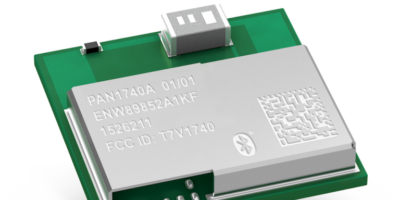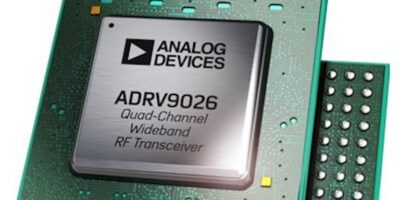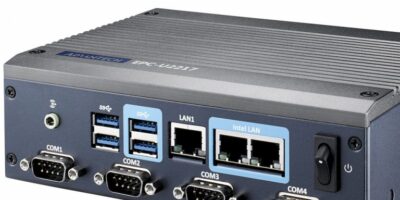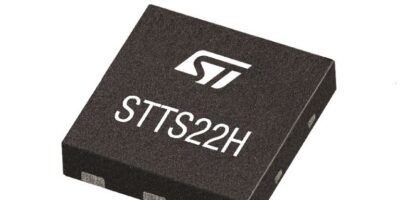The low energy PAN1740A Bluetooth 5.0 module is compact and has a fast boot time for IIot and smart home applications as well as remote controls.
The module is the successor of the PAN1740 Bluetooth module. The PAN1740A is an optimised version, offering a quicker boot time and supporting up to eight connections to create more advanced applications. It can be used as a standalone application processor or as a data pump in hosted systems. The device is optimised for remote control units (RCU) requiring support for voice commands and motion/gesture recognition.
The Bluetooth Low Energy firmware includes the L2CAP service layer protocols, Security Manager (SM), Attribute Protocol (ATT), the Generic Attribute Profile (GATT) and the Generic Access Profile (GAP). All profiles published by the Bluetooth SIG, as well as custom profiles, are supported.
The footprint is only 9.0 x 9.5 x 1.8mm and features a Dialog DA14585 board and an Arm Cortex-M0 microcontroller. The operating temperature range is -40 to +85 degrees C and the supply voltage range is 2.2 up to 3.3V.
The fast boot is a benefit to industrial IoT (IIoT) devices, like connected sensors or human machine interface (HMI) devices, says Panasonic. Smart home and building automation devices like lighting systems, metering applications, remote controls, trackers or smart home nodes will benefit from the PAN1740A’s low power consumption, says Panasonic.
Panasonic develops diverse electronics technologies and solutions for customers in the consumer electronics, housing, automotive, and B2B businesses. The company celebrated its 100th anniversary in 2018 and operates 582 subsidiaries and 87 associated companies worldwide.
Panasonic Industry Europe is part of the global Panasonic Group and provides automotive and industrial products and services in Europe. As a partner for the industrial sector, Panasonic researches, develops, manufactures and supplies key electronic components, devices and modules up to complete solutions and production equipment for manufacturing lines across a broad range of industries. Panasonic Industry Europe is part of the global company Panasonic Industrial Solutions.







